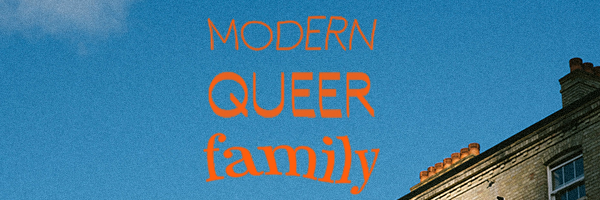Ever since I surreptitiously watched noughties Scottish drama Lip Service as a kid and realised lesbians exist, finding onscreen representation of myself has been a complicated journey. I may not have grown up to be a Glaswegian lesbian photographer like (main character) Frankie – and Lip Service definitely didn't have any Black protagonists – but as a London pre-teen, the influence it had on my idea of the gay lifestyle was huge. It was the first show that gave me permission to imagine my own queer circles and friendships, however dissimilar they ended up being.
AdvertisementADVERTISEMENT
For queer Black people, the question of being 'seen' in the media is complex. When we were younger, finding a character who was relatable to us in any way was momentous; it set the low bar of expectation we have today. Watching TV and films now, as grown ups, this limited representation forces us to choose between settling for a storyline that we could conceivably live out but where the characters don’t look, speak or act like us, and a surface-level relatability to characters just because they're queer and Black.
When it comes to representation of queer Black families, we don't often have any choice. We see Black families and some queer families on screen but seldom the two combined. And when we do see a queer Black person's home life, more often than not it's from one character’s perspective as the queer person in their family. Take Eric's relationship with his father in Sex Education or Denise's coming out in Master of None’s Thanksgiving episode. While these experiences undeniably speak to ours, there is a sizeable gap in the onscreen narratives about what happens when these characters eventually consider creating a family of their own.
Looking closer to home at the soap operas that dominate British TV, queer Black characters still consistently fall prey to the Bury Your Gays trope whereby queer characters are expendable and regularly killed off or written out. This is, of course, much easier and less messy for writers to do if the character is not nestled within a familiar family unit. EastEnders has had three regular queer Black characters since the appearance of the first in 1994. The most recent, Fiona "Tosh" Mackintosh, was physically abusive towards her long-term partner, which led to her departure from the soap in 2014. While the portrayal of this relationship garnered praise from LGBTQ+ charities such as Broken Rainbow (which closed in 2016) for bringing to light an important storyline, it was disappointing that it was not balanced out by more positive portrayals of the queer Black families that exist in the world.
AdvertisementADVERTISEMENT
As we build our own networks of chosen families in real life, we lower our expectations and become less reliant on representation in the media. It simply becomes a form of entertainment. I’m not going to watch Kristen Stewart’s lesbian rom-com Happiest Season to see how lesbians celebrate Christmas, and certainly not in the hope of any Black representation; I’ll watch it simply because it’s what everyone’s talking about right now.
And so we learn to take what we want and need from shows and films, whether that's an unforgettable character or a ridiculous relationship, in order to complete the jigsaw puzzle that is our expectations for our lives. Gilmore Girls, for example, was the first show I remember watching where a single parent’s relationship with her child was the focal point. I enjoyed seeing the ups and downs of a dynamic that wasn’t common in contemporary shows – I had single-parent families in my own surroundings and seeing theirs represented on TV gave shape to another small puzzle piece. Little Fires Everywhere felt like a 2020 update; another iteration of the single mother/daughter relationship with a breath of queer, Black fresh air. Neither of these shows fully replicated what I am or might become, and I can’t name a queer Black fictional family that has solely informed my expectations for my own, but I can think of many fictional families that, added together, help to create a picture of what to aspire to – and what to avoid.
AdvertisementADVERTISEMENT
The most concrete ideas that I (and many of us) have about queer family come from the people I am surrounded by in real life. Sharing the hopes we have for our future families – those we might create and the chosen families we already have – lets us put new possibilities into the world. We slot in the missing puzzle pieces by borrowing from the little we have seen on screen.
A cornerstone of both queerness and Blackness is crystallising what we want for ourselves with little regard for precedent and the expected. This is why the people we have around us are most invaluable to our imaginations of our future. Queer and Black communities, separately and combined, created the blueprint for choosing, maintaining and nurturing families where there was no picture-perfect model – fictional or not.
Unconventional and unimagined forms of family are a fundamental part of queer and Black communities. These might make their way into a TV show or a film but they have always existed around us. As all queer Black people know, seeing ourselves on screen is not the key to knowing the myriad forms of queer family. It’s about the friends, networks and degrees of separation that we have in our lives.
One day, perhaps, portrayals of our community will be given more time and care on screen, which in turn would mean a brighter picture of the future both for our self-perception and the wider world. Until then, I look to the community around me and I piece it together as I go along. I’ll keep an eye on the TV, though – maybe one day I'll see a puzzle piece that makes sense all on its own.
AdvertisementADVERTISEMENT







